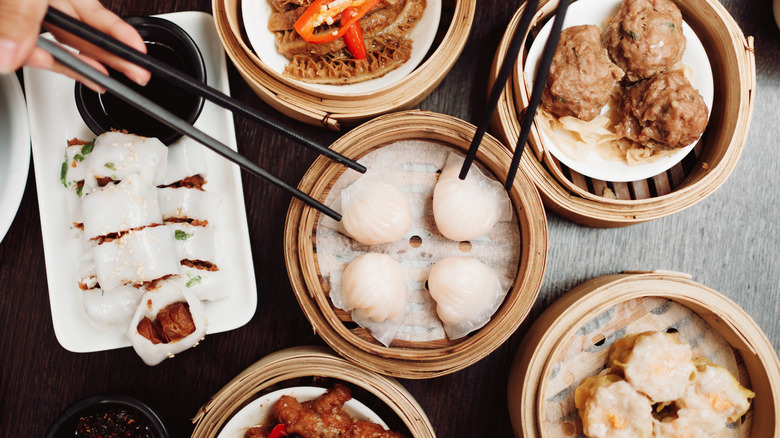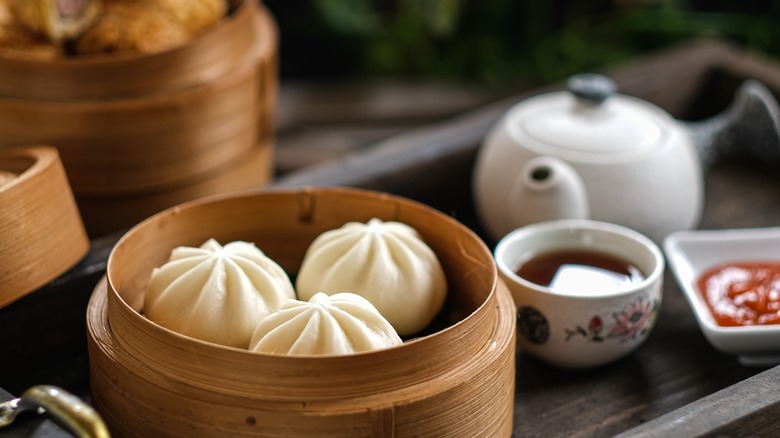The Unique 2-Finger Method To Show Gratitude When Enjoying Dim Sum
While enjoying dim sum and tea at a dim sum joint, there's a unique way to thank someone for pouring your tea. Of course, you could always say thank you, but if you want to show off your dim sum prowess, get ready to employ your forefinger and middle finger. Then, the next time someone, like the waiter, a friend, or a loved one, pours you hot tea, tap those two fingers together on the table to thank them. Once, twice, or thrice is up to you, though we prefer to tap at least thrice to get the message of gratitude across. This gesture is practical, especially when the restaurant is loud and most dim sum restaurants tend to be lively.
How did this unique 2-finger method to show gratitude when enjoying tea at dim sum come about? It has been said that Chinese Emperor Qianlong of the Qing dynasty would disguise himself as a commoner and frequent restaurants. When enjoying dim sum, he would pour tea for his subjects. And, because they didn't want to give away his royal identity, the subjects would tap two fingers on the table to represent deep kneeling or kowtowing as thanks. That said, it has also been alleged that the practice likely originated from guests thanking each other by knocking on a table during Tang and Song Dynasty banquets.
Always show gratitude when someone pours you tea at dim sum
This unique 2-finger method to show gratitude during dim sum has withstood the test of time, though these days, it's a more common practice amongst the older generations. In modern times, while hot tea enjoyment and pouring are still expected during dim sum, this ritual competes with the changing tastes of younger patrons, who might opt for contemporary beverages like soda or boba tea.
Also, there are a few rules to remember with this method, though these rules are not written in stone. How you hold your fingers can differ depending on who you enjoy dim sum with. Some people opt to tap with three fingers instead of two. To show respect to your elders, you may want to tap the table with all the knuckles of your closed fist. Grandparents, in return, may tap with only one finger when a grandchild pours them tea.
As aforementioned, it's not wrong to verbally express gratitude with a "thank you" when someone pours you tea during dim sim. Customs and rituals evolve with time; however, preserving elements of culture and history is vital, even when the origins are entwined with folklore. This unique two-finger method to show gratitude, rich with legendary origins, invites interpretation, but will undoubtedly live on in future generations.

